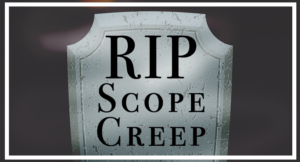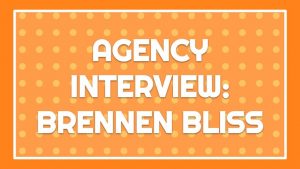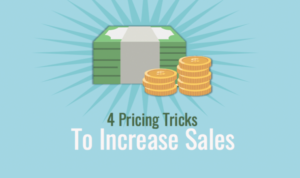When you first started your digital agency you probably did a lot of work for friends, family, and to receive referrals from those friends and family members. Those were the days when a handshake and your word was enough structure for the project to stand on. However, as your agency grows and you start looking to win bigger deals, a handshake simply won’t cut it.
By this point, you’ve probably dipped your toes in the water and started to enter the proposal process (in which case you’re lucky you found this) or you’re elbow deep in proposals that keep leading you down dead-end roads. Either way, rejoice! Because you’re here now.
To shave time off of the proposal process, build value in your prospects eyes, and get paid the big bucks, you need a proven template. The 12 sections below cover the winning template that was used and refined for over 15 years. Of course, every agency is different. So take what you need and forget the rest. Add and subtract until you get the winning framework suited for your agency’s needs.
The Perfect Proposal
Overview
What’s in a name? A lot! And if you name it “[Agency Name]’s Proposal” you’re already missing out on a huge opportunity. If you’re dealing with big clients, you may never meet the decision maker. This means there is only one thing to base a decision off of: your proposal. And you’ve only got a couple of minutes before you lose them. So the name should give some insight into what your stellar agency is going to do for them, something like, “Triple Your Traffic Plan.”
Then, do exactly as this section’s name suggests: overview the entire plan. Tell them about the ultimate goal (and in layman’s terms) how you’re going to get there. You can also use this opportunity to explicitly let them know why you’re the best choice for them because of XYZ… don’t leave anything up to interpretation.
Be sure to leave your contact information on this page. If at any point they want to accept or ask a question, make it as easy as possible for them to reach you.
Guiding Philosophy
This is what your agency does and why you do it. Take your unique selling proposition and jazz it up, like we said before don’t leave anything up to interpretation. If you’ve got it, flaunt it, and make sure they know it!
Have a paragraph letting them know innovation is one of your core philosophies and your staff always strives for the latest and greatest. Go on to tell them that you were founded because you were sick of all the bad coders out there taking advantage of naive business owners. You’re great, so spell it out for them.
Definitions
Depending on who your prospect is, there’s a good chance they don’t know what in the world you’re about to talk about. After all, if they knew what metadata was they probably wouldn’t need you. This section builds value and breaks down barriers. By defining what you’re doing (stuff that would otherwise go right over their head) you’re alleviating some concerns and worries they may have. They’ll feel a lot better investing in your agency if they know exactly what they’re investing in.
Some important terms for digital agencies may be mind maps, user interface, level of effort, customer acquisition cost, etc. See? You know what you mean, but would ma and pa?

Target Audience
Define your prospects’ target audience. You can summarize who you’re going after and even create a customer avatar for them. This adds a whole new level to your proposal. Suddenly this stack of paper isn’t just one big generic suggestion but instead it’s a strategy crafted specifically for their target audience. You can cover demographics and psychographics like:
- Age
- Gender
- Geographic Location
- Income
- Hobbies/Interests
- Goals/Fears
Existing Assets
Again, this shows you did your research and that this isn’t some pre-canned proposal. You’re probably thinking, “but this is a template, I’m not supposed to have to write everything out every time.” Well, chances are most of your clients are experiencing the same problems and working with the same systems. So you can write out a generic section in your template, then add/delete/customize when you’re making one for an actual prospect.
This is your time to let them know their current systems aren’t working. Later you’ll let them know what they could have with your agency’s help. For now, bring the pain!
If you’re designing a website, first cover what they currently have in place and tell them why it sucks! It isn’t optimized for mobile, there are 404 error pages, it isn’t user-friendly, etc. Then tell them WHY it sucks, this is the part that will really bring it home. Elaborate on how their Google ranking is hurting because their site isn’t optimized or how the home page has a high bounce rate because it’s confusing and cluttered. Any visuals you can provide here for proof will only help further your case. Get screenshots, use CrazyEgg, HotJar, Google Analytics, anything you can get your hands on.
Strategic Recommendations
Now that you’ve brought the pain, it’s time to show a light at the end of the tunnel. This isn’t the time for the specifics, but you want to cover what it is you think needs to happen in the next couple weeks or months (whatever you normal project lifecycle looks like). This is the big picture that sets the stage for what your relationship is going to look like.
If you’re doing a lot for them this can be a quick bullet point list of each objective. Something like:
- Design and implement target audience specific landing pages.
- Design and implement target audience specific automated follow up campaigns.
- Establish KPIs to track landing page and campaign activity.
- Etc…….
Can you see how the previous sections have been building up to this moment? You’ve defined their target audience so the client knows you’ll be creating pages that target who they’re going after, and you’ve defined KPIs so the client knows that you’ll be monitoring progress. Sounds like some dang good recommendations.
(RELATED: Automating your follow-up is crucial to your agency's success. I'll tell you exactly how to do it in this vlog.)
Project Timeline
This is when you break the project up into phases that can be tracked. Smaller projects may only have 3 phases, while larger projects may have 10+ phases. Give the phase a name (Design Phase, Programming Phase) and skim over what will happen (Code custom features for landing pages). Let the prospect know how much time will be spent in each phase and give yourself a 20-25% buffer. Finishing the project earlier than expected gets brownie points, finishing it past the due date gets unhappy clients.
This is as granular as the project specifics are going to get in the proposal. A Project Scope document may have more specifics, but before you spend time on all of those little details you need to get a commitment from the client.
(RELATED: Itching to know more about eliminating scope creep? Learn more about our Project Management online course where you can become a master at the sales-to-service handoff.)
ROI Projections
This section may not apply to everyone and it requires a little more time and effort to fill out, but boy is it worth it! Especially when you start going to bigger clients. People like to see numbers, they want to know where their money is going and what they’re getting in return. You can estimate conversion percentages, lead-to-close time, followers, engagement, or whatever is relevant. Of course, if you fill out this section you must deliver! Falling short will reflect very poorly on your agency, but this can motivate your project managers to give every project their all.
Investment
Now comes the tricky part. Ultimately your prospects want to know one thing, how much is this going to cost? If they have read the entire proposal, you should have been slowly building value every step of the way. Now it’s time to frame the price as an investment. Don’t say, Total Price: $10,000! and call it a day. You’ll scare them off.
Instead, explain that there’s an initial upfront capital investment and after that, there is a much smaller monthly retainer fee (or however your fee structure works). List out everything they’re going to get, and I mean everything (Design 5 Website Landing Pages, Write Page Copy, Set Up Usability Tracking, etc.). Again, you have to deliver on everything you list here though, so don’t fluff it up too much.
Framing the price this way helps the prospect see the value in hiring your agency. Suddenly you’re not a line item expense but an investment in their future.
FAQ
Okay, so you’ve just hit them with the price, and it probably isn’t the lowest one they’ve seen. So why should they consider you? The FAQ section should be used to alleviate common concerns and objections before they even arise. Never leave anything up to interpretation, this is your chance to craft an eloquently worded, value adding response to questions like:
- Can we just do this ourselves?
- How long before we see an increase in traffic?
- Can we host the site ourselves?
Next Steps
If they know exactly what comes next they can 1. Do it and 2. Stop worrying. Sounds like a duh moment, right? Why do so many people leave it off?! If a prospect wants to accept your proposal and move forward, you should do everything in your power to expedite and simplify that process.
If you so choose, you can include some legal copy here as well. We have found this to be a barrier to entry so we prefer to reference the legal jargon, but handle it at a later time. This is entirely up to you – just make sure you’re protecting your agency and following all of the rules.
Executive Summary
This is your final chance to WOW your prospect. Put enough detail in here so that someone who has never read it before can understand what is going on, but don’t bog them down. Reiterate your dedication to their success and why they need you, this is your last chance to hit them with the pain points.

A great way to do this (if you included the ROI projections section) is by letting them know how much revenue they’ll gain with you or lose without you. Lastly, thank them for the opportunity and time, and call it a day.
When you’re customizing your proposal template, be generic but include everything you can. That sounds like a contradiction, but let me explain: Having 25 FAQs in your template is a win! This way when you need to tailor your proposal for a specific prospect you can simply delete all of the ones that don’t apply, but you don’t have to worry about coming up with new ones. This will save you hours and hours of time in the long run. Start refining this template and customize it to suit your agency. Once you’ve perfected it, you’ll be sending out world class proposals in under an hour. Click the link below to get your free copy. Now the only thing left to do is to increase your service bandwidth!
(NOTE: If you want help getting your proposal into tip-top shape, click here to learn about our Proposal Template online training. In this training, you’ll get a customizable template, brief and to-the-point videos that help you as you customize, and an hour with Lee to go over it all once you’re finished.)



